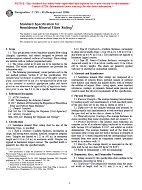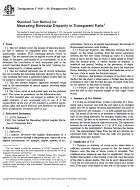1.1 This test method covers the measurement by electro-mechanical means of the in-place stiffness of soil or soil-aggregate mixtures so as to determine a Young’s modulus based on certain assumptions. The apparatus and procedure provide a fairly rapid means of testing so as to minimize interference and delay of construction. The test procedure is intended for evaluating the stiffness or modulus of materials used in earthworks and roadworks. Rapid in-place stiffness testing supports U.S. federal and state efforts to specify the in-place performance of construction materials based on modulus. Results obtained from this method are applicable to the evaluation of granular cohesionless materials. They are also applicable to the evaluation of silty and clayey materials with more than 20 % fines that are not subject to a change in moisture content. If the silty and clayey material experiences a change in moisture content, then moisture content shall be taken into account if the results of this method are to be applicable. The stiffness measured with this method is influenced by boundary conditions, specifically the support offered by underlying layers as well as the thickness and modulus of the layer being tested. Since this method approximates the layer(s) being evaluated as a half-space, then the modulus measured is also approximate.
1.2 The stiffness, in force per unit displacement, is determined by imparting a small measured force to the surface of the ground, measuring the resulting surface velocity and calculating the stiffness. This is done over a frequency range and the results are averaged.
1.3 The values stated in SI units are to be regarded as the standard. The inch-pound units equivalents may be approximate.
1.4 This standard does not purport to address all of the safety concerns, if any, associated with its use. It is the responsibility of the user of this standard to establish appropriate safety and health practices and determine the applicability of regulatory limitations prior to use.
Note 1 – Notwithstanding the statements on precision and bias contained in this test method; the precision of this test method is dependent on the competence of the personnel performing it, and the suitability of the equipment and facilities used. Agencies that meet the criteria of Practice D 3740 are generally considered capable of competent and objective testing. Users of this test method are cautioned that compliance with Practice D 3740 does not in itself assure reliable testing. Reliable testing depends on many factors; Practice D 3740 provides a means of evaluating some of those factors.
Product Details
- Published:
- 01/01/2008
- Number of Pages:
- 5
- File Size:
- 1 file , 120 KB
- Redline File Size:
- 2 files , 230 KB


